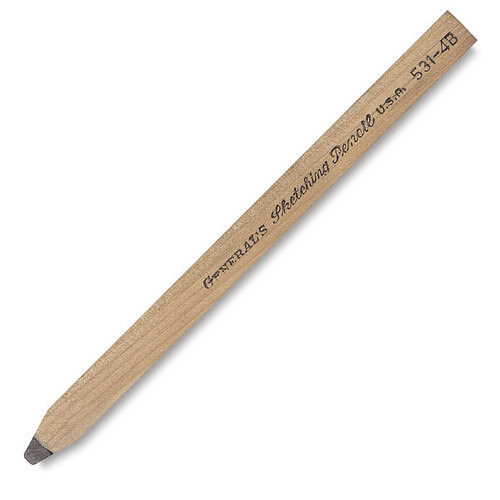Well, that’s challenging. And interesting.
If the size of lead you are thinking about is comparable to that of the “old” flat lead made for instance by Faber-Castell or Fedra (e.g. FC 9045 lead), you can still find mechanical pencils able to hold that lead and allow you to use it regularly; case in point, pencils like the Fedra Constructor, or Faber-Castell’s own TK 9600. If, however, the flat lead is just a little bit bulkier, than the situation gets slippery.
One possible way out is to find a — not particularly common — Faber-Castell TK 9400 FL (FL standing for “flach”, presumably), which combines the usual clutch of a TK 9400 with a soldered pair of flat prongs gripping the flat lead, and transforming an otherwise ordinary pencil into the advanced clone of the outdated TK 9600 flat-lead twistaction pencil dedicated to lofting and other specialised forms of drawing; given the higher level of freedom in the clutch (which still opens wide thanks to a pushbutton in the back of the barrel), you can accommodate even a larger piece of flat lead in the mouth of the pencil.
I have a few “abnormal” slate refills here, supposed to be cased into a strange, plastic “worker’s pencil” more similar to a snap-blade cutter; they are around 2-2.5mm in height, and they ought to fit in the clutch of the TK 9400 FL, but if you need precise measurements you’ll have to wait for me finding the lead and my calliper, and test the capability of the pencil.
This solution, however, does not cover the case when the piece of lead is truly massive, and looks more similar to a parallelepipedon with square base than to a slate with one dimension almost negligible with respect to the length of the lead.
If your lead is very bulky, I can only think about a metal holder made by various companies (Holbein being one, the model is 1570-H), dedicated to square-based pastels, and more similar to a pencil extender with sharp edges, than an actual leadholder. Probably great for sketching, but writing or drafting are entirely different stories.
Finally, for a triangular lead… Well, I too miss the good old days of the grand shops specialised in art materials, which stored any sort of uncanny marvels and impossible-to-find rare oddities — here in Italy only a bunch of them still fight hard to say open, but they’re gradually changing, and one after the other they’ll probably go extinct like the dinosaurs, replaced by ever-present discount shops where quality is debatable to say the least.
But I digress. For a triangular lead, as I was saying, maybe better contact a talented artisan, one mastering the niceties of metals, lathes and machining techniques, and have a custom-made holder built to suit your needs; maybe something slightly fancy, with ornamental grooves, and knurling on the grip; aluminum body with brass accents… It’ll be not only the best possible solution, but also a delightful addition to any serious collection. 




